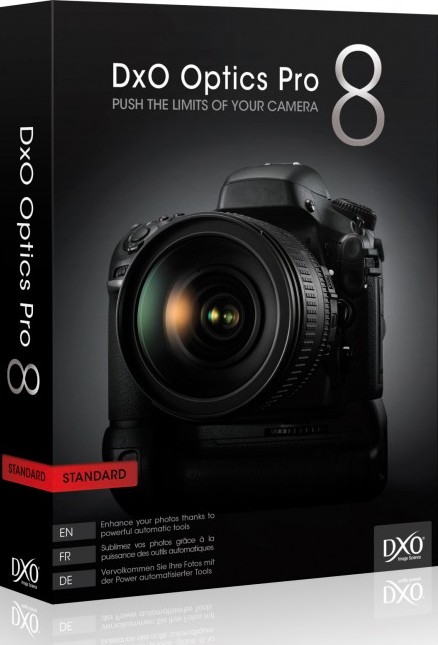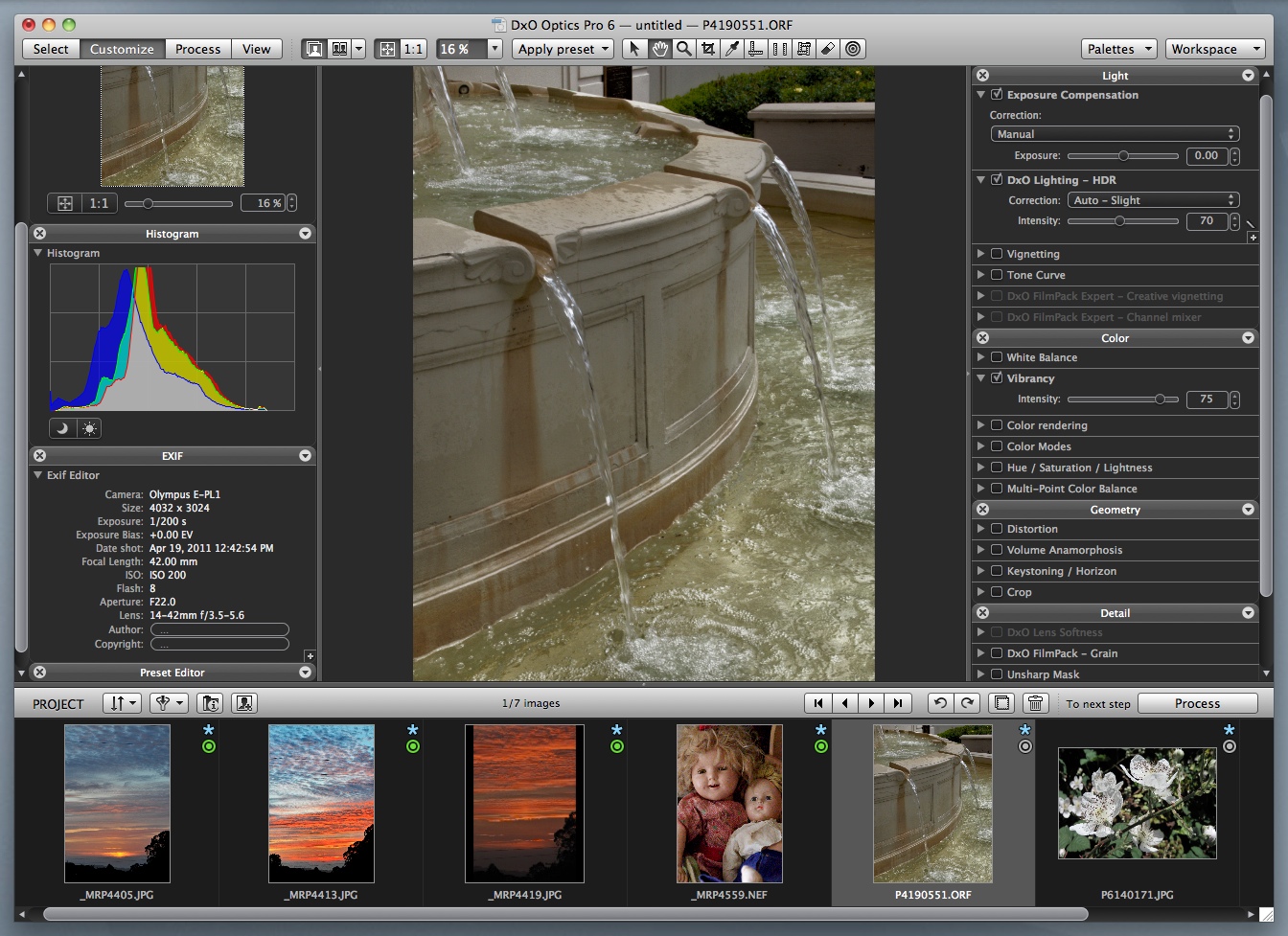

Just double-click to reset the sliders to the default. You'll also find improved chromatic-aberration correction for images shot with lenses for which a DxO module exists. Lens softness correction, for example, is better with strong highlights. In addition, DxO Optics Pro 8 offers a long list of minor improvements. There's a better organization of palettes and controls, and some controls have disappeared, but the tools that were once available are still there-they've only changed location. There are other improvements that justify the big number upgrade, but all are less visible. Denoising can now happen at all zoom levels, as with other image editors.

In my opinion, the Denoising tool still is one of the best around, and it has become even better with an added dead-pixels slider. Changing microcontrast adds or removes some punch and structure.

The Contrast tool has a new Microcontrast slider. When applied with care, I could control contrast better than with a curve. Unique is that you can also adjust the blacks, which can result in dramatic looks. The Selective Tone tool allows you to set highlights, midtones, and shadows individually. It adds some contrast to the image, which again made me suspect there's more going on than just exposure compensation. Smart Automatic Exposure, also new, works with RAW and JPEG images.

After fiddling a bit more, it looked to me as if Smart Lighting does more than adjust the brightness and saturation: It improves the looks of an image. The adjustment worked extremely well on the sunset photo however, it made the image taken with a flash slightly more flat. I tested all of them on a photo shot at sunset and another one shot with a strobe. Except for a legacy setting, you can choose one out of four new ones: Slight, Medium, Strong, and Custom. The most important new feature is Smart Lighting, an automatic re-lighting algorithm. I tested only the DxO Optics Pro 8 Elite's most important new features, as many are related to the reorganization of palettes and tools. DxO Optics Pro 8 has enough new features and improvements to keep even the most demanding photographer happy, with most of them aimed at automating adjustments. Right on the heels of PhaseOne's new Capture One Pro 7, DxO Labs released version 8 of DxO Optics Pro, their RAW converter and image-editing app.
Free dxo optics pro 8 for free#
Windows 2000/XP/Vista and Mac OS X demo versions can be downloaded for free from Tools Can Automate Pretty Much Anything DxO Optics Pro offers a whole range of features to automatically correct and enhance your images: RAW conversion and highlight recovery - Elimination of distortion, vignetting, and lens softness through specifically developed camera and lens modules - Removal of camera noise and purple fringing - Optimization of exposure and dynamic range - Color enhancements with access to original film color renderings - Perspective corrections with auto crop – Adobe Lightroom and Photoshop plug-ins are also available. Whether you want to enhance your pictures in a single click without having to bother setting up sliders, or you want to manually set up your own correction parameters, you will find an operating mode (auto, guided or expert) to suit your needs. The uniqueness of DxO Optics Pro lies in its ability to perform the highest quality corrections without human intervention.
Free dxo optics pro 8 professional#
Designed for advanced amateur and professional photographers, DxO Optics Pro is a must have accessory for supported DSLRs and high-end digicams.
Free dxo optics pro 8 software#
Based on extensive analysis of cameras and lenses, DxO Optics Pro is different from any other digital photography software application. Next generation automatic image enhancement - DxO Optics Pro is a multi-award winning program running on Windows or Macintosh to automatically improve image quality.


 0 kommentar(er)
0 kommentar(er)
